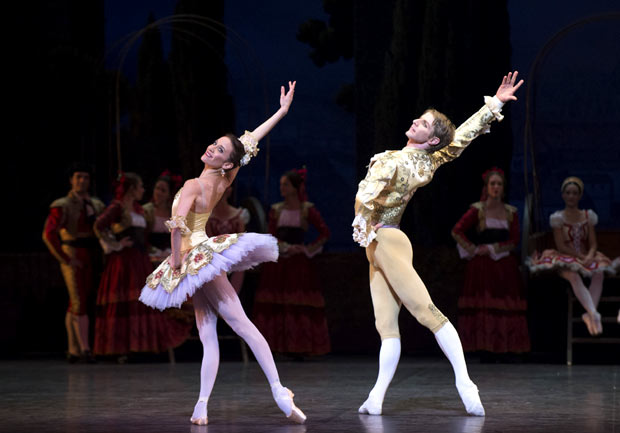
© Julien Benhamou. (Click image for larger version)
Paris Opera Ballet
Don Quixote
Paris, Opera Bastille
November 24 (matinee), December 12 & 19, 2012
www.operadeparis.fr
It’s not every day Petipa’s carefree Don Quixote comes with a health and safety warning. It certainly did this season however, in what turned out to be a very long run of Rudolf Nureyev’s production at the Paris Opera Ballet. Injuries played havoc with the casting throughout November and December, with only five performances out of 26 featuring the dancers originally scheduled to dance. A good number were reassigned twice, with ten performances each falling to Karl Paquette and Ludmila Pagliero; guests had to be brought in from Vienna to fill in the holes and, in two or three cases, the audience was treated to on-the-day switcheroos made public by the dancers themselves on Twitter. A fine day for social media, but now that the run is behind us some uncomfortable questions remain.
This was by no means the first red flag for the Paris Opera Ballet. Only last March, the company had to scramble for an unrehearsed Gamzatti on the morning of a live cinema broadcast following injuries to every single one of the dancers originally down for the part. Only three women made it on stage as Manon in May, with eight performances out of 17 going to Isabelle Ciaravola. The season before, étoile Emilie Cozette danced no less than ten Odettes/Odiles, half the total, with a string of different partners for lack of healthy alternates. That’s not even mentioning the now legendary workload of Karl Paquette, who has saved more than his fair share of performances in the past decade and did it again with Don Quixote.
Call it bad luck if you will, but the pattern goes far beyond the odd injury or illness to a key soloist, and should be a serious cause for concern in any major company. This winter season, young étoiles and soloists, supposedly in their prime, were all out of action at once, including Matthias Heymann, Myriam Ould-Braham, Josua Hoffalt and Florian Magnenet; in addition; Stéphane Bullion pulled out of all his performances, Dorothée Gilbert had to cancel some herself, young Pierre-Arthur Raveau only managed one Basilio, and wunderkind François Alu, who was added to the line-up following defections, sat one out because of a nagging injury.
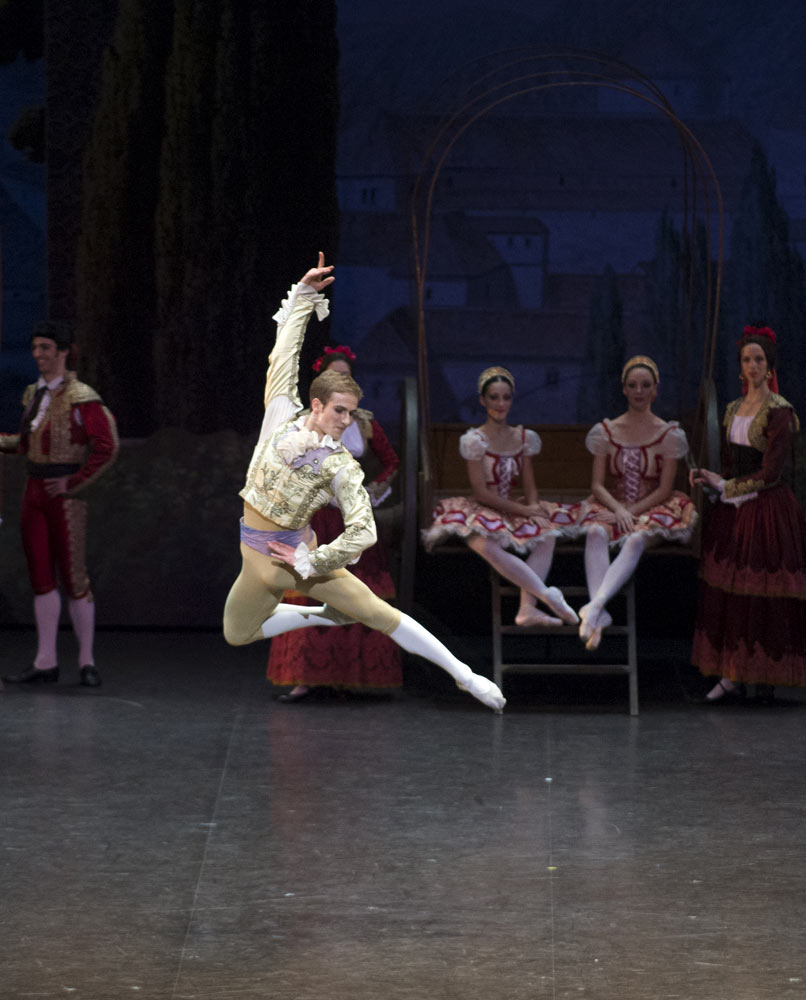
© Julien Benhamou. (Click image for larger version)
With 154 dancers, the Paris Opera has one of the largest ensembles in the world, second only to Russian counterparts; barring a catastrophe, no one in the audience should be wondering whether one of the leads can make it to the end of the performance through what seems like either exhaustion or pain. The company’s insistence on scheduling concomitant runs in its two opera houses may provide a partial explanation, as a chunk of the company was performing at the Palais Garnier in a Forsythe/Brown program during the Opéra Bastille Don Quixote debacle. But there is perhaps more to the current injury rate, and until it is addressed the company is playing with fire where dancers’ health is concerned.
Nureyev’s production of the Petipa classic couldn’t have helped. If you think Don Quixote is hard on the Principals, this version is a killer, adding, among other niceties, two horrendously difficult variations for Basilio in Act I. Nureyev also substitutes a number of fussy, unrewarding combinations for the existing choreography: memorably, when Russian Denis Matvienko appeared as a guest in the POB’s Don Quixote not long after soaring performances in London a few years ago, his bravura dancing suddenly seemed constrained, his floating jump gone amid all the counter-intuitive petit allegro. It takes superhuman stamina to look effortless in this Don Quixote, and Nureyev’s contributions tend to hamper the rhythm and construction of the ballet. The Prologue is an interminable muddle; Act I is dragged down by overly slow tempi; Act II boasts tedious new transitions featuring umbrella-waving monsters and a man in black who carries Dulcinea around like a ghostly Tower of Pisa, not to mention a pas de deux danced to music from La Bayadère. In a word, light relief is in short supply for both the dancers and the audience, despite effective designs and Petipa highlights.
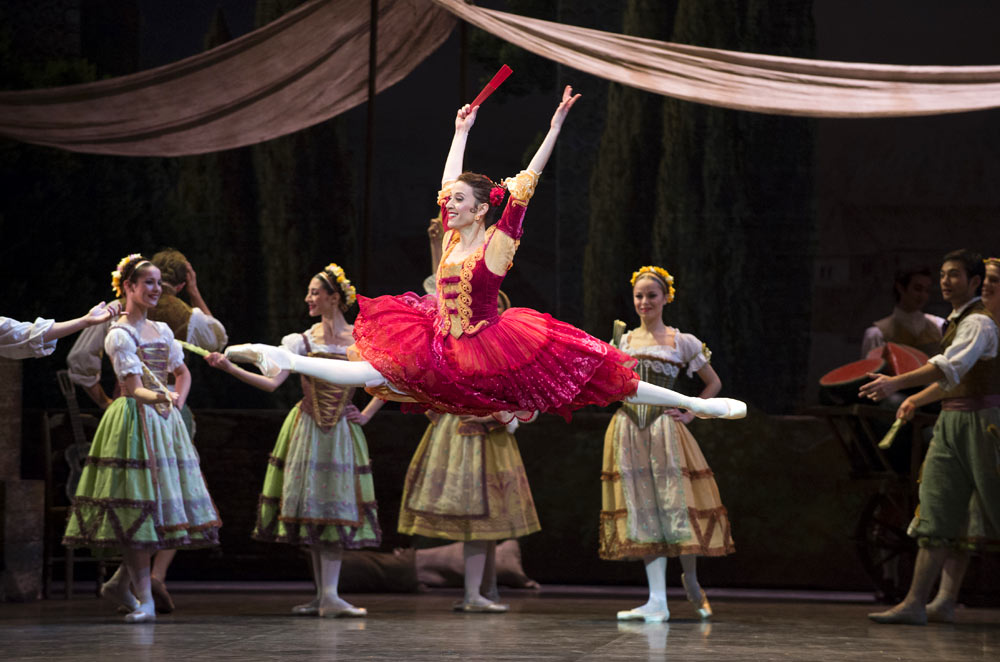
© Julien Benhamou. (Click image for larger version)
It was left to the remaining dancers to carry the ballet under the circumstances, and they did their utmost to compensate. Early in the run one of the newest étoiles, Ludmila Pagliero, showed again that she can be depended upon to breeze through three-act ballets with no-nonsense confidence: the first and only Argentinian to dance with the POB is clearly not afraid of her new position within the company, and her dancing has a bright, hard edge that makes her one of the most assertive Kitris in a company of traditionally undemonstrative dancers. At the beginning of Act I she runs on stage as she did during the traditional Défilé last September, in a rush of adrenaline, ready and eager to claim the spotlight; she is also slowly but surely working ballerina flourishes into her phrasing, from a snap of the foot to finish the Act I variation with an exclamation mark to the fan action she introduced in her fouetté series later in the run, a rare occurrence in Paris. Pagliero isn’t the type of dancer you love at first sight, but she is currently growing with every new role and her determination and classical panache have rightly won her respect from all corners this season.
Her Basilio was Karl Paquette, the Paris Opera’s resident Superman, who was originally scheduled to dance twelve performances with three different partners. He was filmed for the cinema broadcast in December with Dorothée Gilbert, and while the run didn’t show the latter at her best following what appears to be either illness or a minor injury, Paquette actually improved as it went on; his gift for comedy was put to good use in both casts, despite his relative lack of bravura in the variations. Gilbert had solid chemistry with him and plenty of charm in Act I, but the technical brilliance and attack she is rightly known for weren’t quite there on December 12. Her Vision scene had a strangely tragic air about it, and a missed balance in the Grand Pas caused her to practically fall back on an arabesque; beyond that, hers was a much tamer Kitri than she once showed as a young, hungry corps member ready to take on the world.
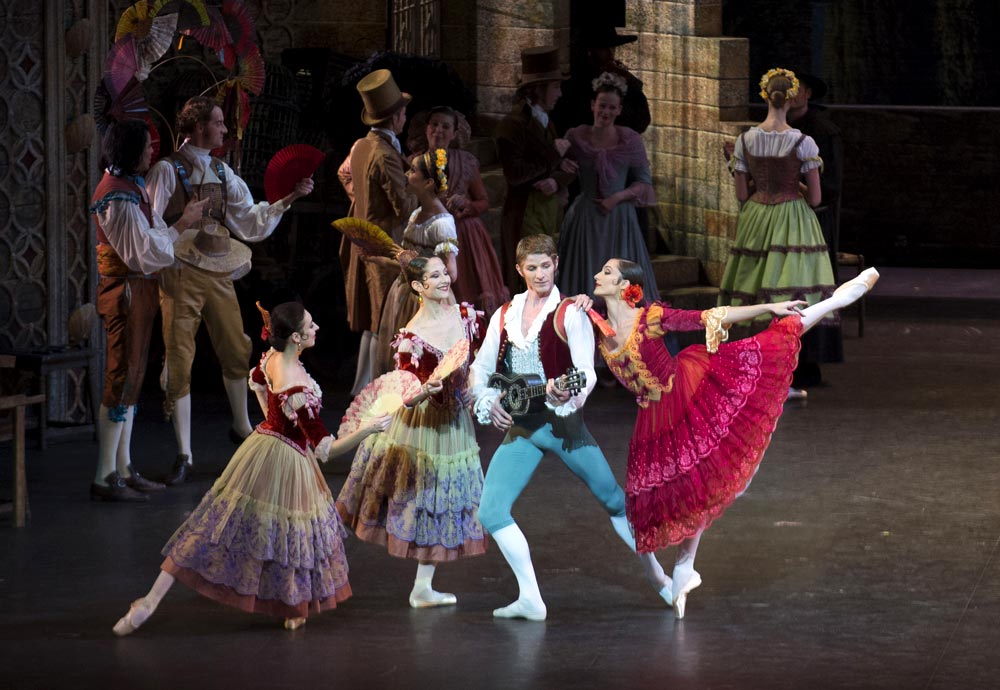
© Julien Benhamou. (Click image for larger version)
It was down to another hungry youngster to raise the bar, and François Alu did just that as Basilio later in the run. Alu, a very promising 19-year-old Sujet singled out for the first time last season, is a name to remember the way Heymann was a few years ago, and he clearly has an equally bright future ahead with the company if he remains healthy. His first performance with Alice Renavand, a rather tall partner for him, was certainly unorthodox, but it brought a frisson of excitement to Bastille more experienced casts couldn’t match. It didn’t matter that they traded the one-handed lifts in Act I for explosive throws into a fish dive and ran into trouble during the Grand Pas with iffy promenades: the combination of her stage experience and his boyish charm and superlative technique brought fun back to this Don Quixote.
Renavand is mostly known as a contemporary dancer, and while Kitri may remain one of her only classical leads because of her limitations in this repertoire, she brought the performance to life with vivid theatrical imagination and complete control of the character’s arc. She worked intelligently around her lines, emphasizing ports de bras and head placement wherever necessary, and her warmth on stage helped create a connection with the audience that Alu can’t fully sustain yet. What he can do, however, is let the explosive precision and effortlessness of his technique shine, and that he did; he also worried slightly with clear hints of fatigue or pain in Act I and III, and as he was barely coming back from an injury, one hopes he will be given the time he needs to grow into Principal roles.

© Julien Benhamou. (Click image for larger version)
Don Quixote is also routinely an opportunity to see younger dancers in the supporting roles, but the wave of injuries meant a high number of performances for a few select performers in nearly each part this season. Laura Hecquet improved on a rather brittle first performance as the Street Dancer, but is a little hieratic for the part; the ever-reliable Christophe Duquenne made an appealing if very French Espada for the recording. Héloïse Bourdon was a fine, reliable Queen of the Dryads with her elongated lines, but I have to mention Amandine Albisson, who transferred from the Forsythe program for later performances and was smoothly feminine and expansive in the variation. Of the Cupids, Marine Ganio, sister of Matthieu, was the quicksilver jewel, rightfully stealing the show with her ability to make every step that much clearer and brighter; her promotion to Sujet last November will hopefully lead to bigger things. Another highlight was Allister Madin, who managed to imbue the Act II Gypsy, a role that packs its own Nureyev difficulties with the larger-than-life character projection that Russian companies routinely display. And it was a pleasure to see the corps de ballet working, more often than not, with its usual clarity and unity – they all deserve bouquets under the circumstances, but I reckon a post-Don Quixote holiday was far more welcome, and needed.









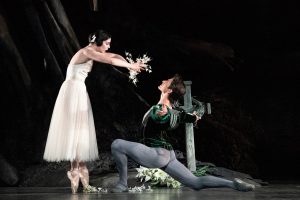




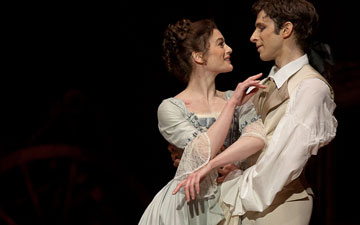

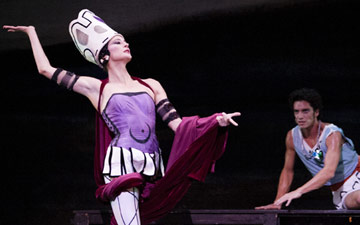
You must be logged in to post a comment.